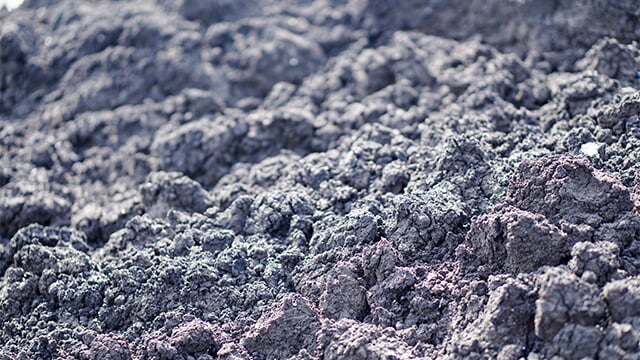Get In Touch With Us
© 2024 Created By MetalTradeMines

When many automotive and electronics manufacturers look at their waste streams, they see “sludge” and think of disposal headaches. But hidden deep in that nickel-rich residue is a surprisingly profitable resource. In this post, we’ll walk you through how nickel sludge forms, why companies are racing to reclaim its value, and what the future holds for this once-overlooked material.
Nickel sludge is the gritty byproduct left behind in electroplating shops, battery‐recycling centers, and stainless‐steel pickling lines. Whenever metals are plated or stripped in acid baths, tiny particles of nickel end up in wastewater. After filtration, those solids typically contain anywhere from 30% to 45% nickel, with traces of iron, cobalt, and other metals mixed in. When you can find a lot of sludge with at least 35% nickel content, it suddenly becomes worth extracting—because that reclaimed metal can go straight back into high‐performance applications like EV battery cathodes.
Recovering nickel from sludge is a two‐track journey, depending on how much you have and how pure you need it to be.
Hydrometallurgical Route (for smaller batches or higher‐purity needs):
Imagine taking that sludge and gently dissolving it in a mild acid bath—sulfuric acid, for instance. As the nickel ions go into solution, you add a neutralizing agent (like lime), which causes pure nickel hydroxide to precipitate out. After a quick filter and a gentle bake (calcination), you end up with nickel oxide (NiO). From there, a few more refining steps—like electrowinning—can transform it into battery‐grade nickel sulfate or powder. This method works beautifully if your sludge doesn’t carry too many stubborn impurities and you’re dealing with moderate volumes.
Pyrometallurgical Route (for larger volumes or tougher feedstocks):
If you’re sitting on truckloads of sludge—especially sludge that’s a bit dirtier with sulfides and moisture—roasting is the name of the game. First, you spread the sludge out in a roaster or kiln and heat it until the sulfides burn off. Once it’s dry and oxidized, that material goes straight into an electric‐arc furnace (EAF). There, at temperatures north of 1,200 °C, it turns into molten metal. After separating out the slag, you’re left with blister nickel (around 98–99% pure). If you need it ultra‐pure—for battery cathodes—you can send it through a converter or an electrowinning cell to push it to 99.9%+.
Once you’ve extracted that nickel, the opportunities are wide open:
EV Battery Cathodes: The heart of modern lithium‐ion batteries—especially NMC (nickel‐manganese‐cobalt) cells—relies on nickel sulfate or nickel metal powder. As electric‐vehicle production ramps up in Southeast Asia, battery makers are hungry for every ounce of high‐purity nickel they can get.
Stainless Steel & Superalloys: Foundries and steel mills love recycled nickel because it lets them reduce costs on imported ferro‐nickel. When that sludge‐derived nickel reenters the furnace at 99%+ purity, it behaves exactly like mined nickel, making stainless‐steel production more affordable and sustainable.
Plating & Specialty Coatings: Nickel recovered from sludge can be fed straight back into electroplating baths, offering automotive and marine manufacturers a closed‐loop solution instead of buying new nickel salts.
Over the past 18 months, we’ve watched Southeast Asia’s gigafactories push nickel-sludge demand through the roof. Vietnam and Indonesia, in particular, have seen a roughly 20% year‐over‐year jump in imports of nickel sludge—much of it bound for battery plants in Thailand and Malaysia. When electric‐vehicle makers need every gram of nickel they can lay hands on, recycling sludge becomes an economic imperative.
If you’d like a deeper regional breakdown, check out our post on “Analyzing the Demand for Copper & Nickel Sludge in Southeast Asia,” where we break down which countries are buying, who’s exporting, and where prices are heading.
Not all nickel sludge is created equal. Before you commit to a purchase, insist on a recent assay report that spells out the nickel percentage, moisture level, and any nasty impurities like lead or chlorides. At MetalTradeMines, every batch of Nickel Sludge comes with a complete lab analysis—showing you exactly how much nickel (and what other metals) are in the bag. That way, you’ll know whether to send it to a hydrometallurgical plant or feed it directly into an EAF.
For a deeper dive on quality standards and export documentation, take a look at our guide titled “Quality Standards in Metal Sludge Export: What Buyers Should Know.” It covers everything from moisture thresholds to acceptable impurity levels, so you never get caught off guard at customs.
Right now, nickel sulfate prices are climbing as battery makers stockpile raw materials. Most analysts expect that, as the electric‐vehicle revolution gathers steam, premiums for high‐grade nickel sludge (anything over 40% Ni) could rise another 10–15% per year through 2027. If you’re sitting on a pile of sludge, now is the time to lock in a long‐term offtake deal or at least hedge against further price increases.
Curious about more precise numbers? We’ve put together a “Nickel Sludge Market Forecast 2025–2027” PDF that outlines price scenarios, regional demand curves, and potential supply bottlenecks. Feel free to download it from our website.
For a broader look at India’s refining landscape, read “India’s Pivotal Role in the Global Copper & Nickel Sludge Market.”
If you want operational tips—like how to store sludge safely or set up a small on‐site drying unit—check out “Implementing Best Practices in Metal Sludge Handling and Storage.”
By understanding how nickel sludge forms, how to extract its value, and where demand is heading, you can turn a waste “problem” into a strategic resource—lowering costs and boosting sustainability all at once